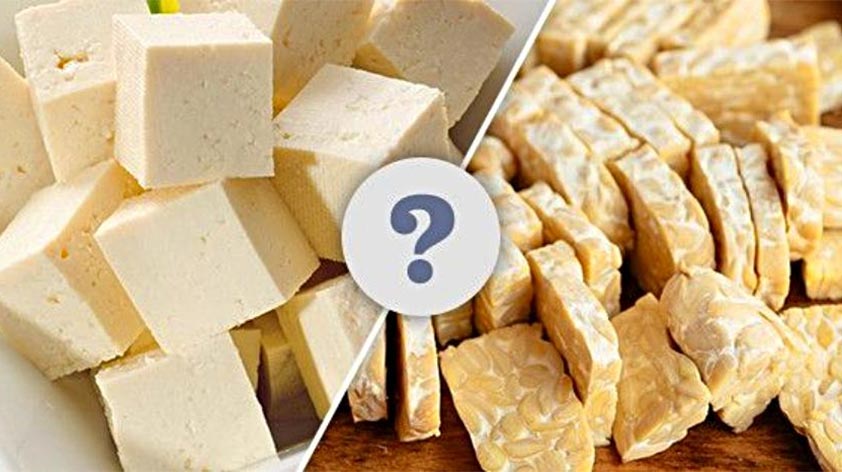
These two different soy-based vegan speciality products both probably sound alien to meat-eaters. However, both are becoming increasingly common sources of plant-based protein and are widely found in most major supermarkets and grocery stores. Read on below to find out what you need to know about them in Tofu vs Tempeh: Which is Better?
What is Tofu?
Tofu is much more popular than tempeh. It’s made through the curdling, pressing and coagulation of soya milk into a solid white block. There are numerous textures available, including firm, soft and silken. The resultant texture is dependent on the water content, with the softer, ‘silkier’ texture being due to a higher water content and vice versa.
What is Tempeh?
Whilst tempeh also originates from soybeans, these soybeans have instead been fermented and then compacted. Often, tempeh comes combined with different grains, seeds and spices. This different method of processing the soybeans means that tempeh often has a nuttier taste and much chewier texture and consistency.
Additional Important Differences
The fermented nature of tempeh, alongside its high-fibre content, means that it serves as a beneficial prebiotic. Prebiotics are important in the diet as they promote the growth of healthy bacteria in the gut. This then aids bowel movement and reduces cholesterol and inflammation, which ultimately contributes to the maintenance of a healthy, trouble-free lifestyle.
So, Which is Better?
Both food sources are classed as complete proteins, but depending on your individual requirements, one may be more suitable than the other.
You’ll often find tempeh combined with legumes, grains, nuts and seeds, meaning that gram for gram it will contain more protein than tofu. For example, an 85g serving of tempeh can provide up to 16g of protein, compared with tofu’s 8g. So if you’re looking for a more satiating and fibre-rich protein source, then tempeh has the upper hand.
However, this also results in tempeh being much more energy-dense. 85g of tempeh contains 140 calories, but the same quantity of tofu contains significantly lower, at just 80 calories.
Both soy products are cholesterol-free and generally low in sodium, though it’s important to be more cautious with flavoured tempeh, as this can have significant amounts of added salt.
Whilst tempeh will provide you with more iron and potassium, tofu’s calcium content is more than double that of tempeh’s. This is important to bear in mind if you aren’t replacing dairy with other calcium-rich or fortified food products.









